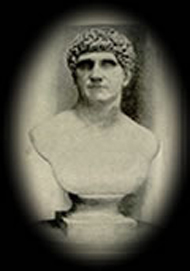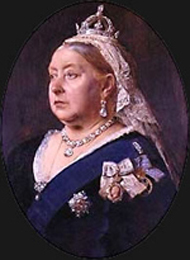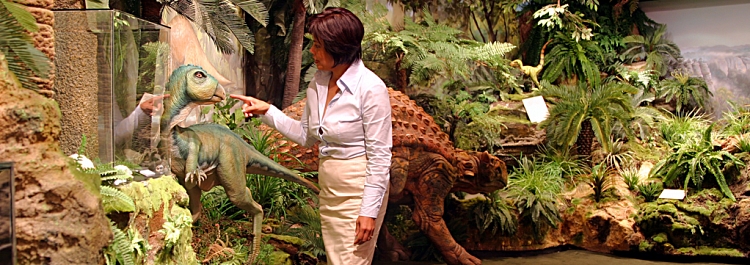Opal History
Opal - the most valued of all gems
 Opal derived its name from “Opalus” which means “to see a change in colour”. Onomacritus, an ancient Greek poet wrote “the delicate colour and tenderness of the opal reminded him of a loving and beautiful child”. However, it was the Romans who popularised them over two thousand years ago. Opals from this era are thought to have come from Cernowitz, a mountainous region in what was at that time Hungary , but now Slovakia . However early Romans believed the source was India , an incorrect belief promoted by traders in order to protect their interests.
Opal derived its name from “Opalus” which means “to see a change in colour”. Onomacritus, an ancient Greek poet wrote “the delicate colour and tenderness of the opal reminded him of a loving and beautiful child”. However, it was the Romans who popularised them over two thousand years ago. Opals from this era are thought to have come from Cernowitz, a mountainous region in what was at that time Hungary , but now Slovakia . However early Romans believed the source was India , an incorrect belief promoted by traders in order to protect their interests.
Pliny the Elder wrote the first Natural History of the World in the first century AD. In this most important publication he wrote that Opal was the most highly prized and valuable of all gemstones in the Empire. Pliny wrote that price was set “according to the decree generally set down and pronounced by our nice and costly dames”!
Pliny's admiration for opal is encapsulated in the following text:
“For in them you shall see the living fire of ruby, the glorious purple of the amethyst, the sea-green of the emerald, all glittering together in an incredible mixture of light”. (Pliny Ist Century AD)
Famous People and Opal

Mark Antony loved opal. Pliny wrote that Antony coveted an opal owned by Senator Nonius and banished the Senator after he refused to sell the almond sized stone, reputed to be worth 20,000 sesterces (hundreds of thousands of dollars today). The Senator preferred to be “turned out of house and home” than part with his opal. According to Kozminsky * the ring was discovered in the tomb of the “firm willed Senator” early in the twentieth century.
Opal has been used in the crowns of kings; the crown jewels of France included fine specimens of opal, and the crown of the Holy Roman Emperor contained an opal stone.
Napoleon & Josephine
Napoleon presented his Empress Josephine with the “Burning of Troy”, a magnificent opal with brilliant red flashes.
Queen Victoria
 Queen Victoria became a lover of opal and wore opals throughout her reign. Her friends and her five daughters were presented with fine opals. Opal became highly sought after because the Royal Court of Britain was regarded as the model for fashion around the world and fine quality opal had recently been discovered in far-off Australia.
Queen Victoria became a lover of opal and wore opals throughout her reign. Her friends and her five daughters were presented with fine opals. Opal became highly sought after because the Royal Court of Britain was regarded as the model for fashion around the world and fine quality opal had recently been discovered in far-off Australia.
Australia's vibrant opal industry began with pioneering opal miners who worked (and sometimes died) in the remote Australian outback.
Tullie Cornthwaite Wollaston, born in South Australia in 1863, braved life-threatening conditions to acquire opal from early miners in remote, desolate areas. It was Tullie Wollaston who introduced Australian opal to the rest of the world. He is considered the father of the opal industry.
An epic desert journey
While working in Adelaide, Wollaston developed an interest in gemstones. In November 1888, hearing of a new opal find, Wollaston and two companions – Herbert Butterfield and an Aboriginal boy named Tomtit - left Adelaide on an 1100 km trek for southwestern Queensland.
After completing part of the journey by rail, the men travelled on by camel across the South Australian desert. They endured searing temperatures, suffered heat stroke, and drank from a fouled water hole putrid with dead and dying animals.
During the hottest summer on record, they walked across rough country to spare their weak, sore-footed camels. When water supplies became dangerously low, Wollaston followed some small birds to a waterhole.
On the last day of their journey the travellers were advised to follow a set of horse tracks in order to find Joe Bridle's Stony Creek opal mine. The tracks went around in circles and they became hopelessly lost. For 17 hours they followed those tracks until finally reaching their destination. They had followed the trail of Joe's mate who had been drunk and bushed for 24 hours!
After buying opal from local prospectors, Wollaston headed back to Adelaide, leaving Butterfield to take care of their new mining ventures. The next day, Butterfield went out to round up the camels. After walking several kilometres in the heat he collapsed and died.
Taking Australian opal to the world
In 1889, Wollaston set sail for England with a parcel of Queensland opal.
London gem merchants were unaccustomed to the brilliant Queensland gems and refused to purchase them. Wollaston persisted until the firm Hasluck Bros, of Hatton Garden , agreed to trial the stones in Europe and America . Before long Australian Opal had been introduced to famous jewellery houses that began to feature opal in their designs, these included Tiffany, Lalique, and Cartier. Wollaston established many markets for Australian opal. He died in 1931, a wealthy man.
Australia now produces around 95 per cent of the world's opal supply. Australian opal is prized the world over, thanks to the pioneering efforts of Tullie Wollaston.





